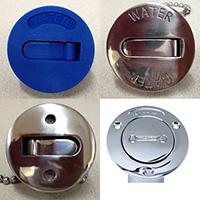My plastic holding tank over flow/vent flange fitting is molded into the top of my tank which the hose fittings thread into. I developed a small crack in the molded flange and the tank it's self and I need to repair it.
The flange for the hose connection is not under any pressure because it is essentially just a vent for sewage gasses or overflow if the tank reaches maximum capacity.
Which it never reaches that point.
My question is what would be the best thing to use to seal and reinforce the crack?
In a pinch I mixed up some 5 minute epoxy I had and sealed the crack, now I want to sure it up some how.
I saw that some people have used JB weld on plastic fuel tanks?
I was thinking of trying some west systems resin with thicking agents, then go over it again with some fiberglass. That west systems is some strong stuff. I have repaired lots of things with it but never plastic tank.
Any thoughts would be great!
I really don't want to have to replace this tank for a stupid flange fitting.
The flange for the hose connection is not under any pressure because it is essentially just a vent for sewage gasses or overflow if the tank reaches maximum capacity.
Which it never reaches that point.
My question is what would be the best thing to use to seal and reinforce the crack?
In a pinch I mixed up some 5 minute epoxy I had and sealed the crack, now I want to sure it up some how.
I saw that some people have used JB weld on plastic fuel tanks?
I was thinking of trying some west systems resin with thicking agents, then go over it again with some fiberglass. That west systems is some strong stuff. I have repaired lots of things with it but never plastic tank.
Any thoughts would be great!
I really don't want to have to replace this tank for a stupid flange fitting.

